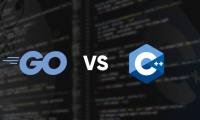Search results: go programming

there are two terms slice and composite literal. in this article we will learn how to create a slice and use composite literal in golang.

to copy one slice into another, go provides a built-in function called copy(). this function allows you to copy elements from one slice (source slice) into another slice

slices in go are a flexible and efficient way to represent arrays. here's what you need to know about slices in golang.

in go structs, fields are encouraged to be the same as anonymous fields, the type of the field is the name of the field.

in golang structure, recommended methods work the same way as recommended fields.

anonymous structs in golang are temporary structures with no names used for one-time purposes, while anonymous fields allow embedding of unnamed fields.

in go language, you are allowed to compare two structures if they are of same type and contain same field values with the help of == operator or deeplyequal() method.

c++ and golang are both great choices for software development. however, each language has its own pros and cons. here are the differences between c++ and golang.

one of go's strengths is its wealth of testing features and available documentation. among them is an extremely useful tool called 'example function', which can help you test your

charts are one of the essential data structures that you must know as a programmer. let's learn how to create graph/graph data structures in golang !
 there are two terms slice and composite literal. in this article we will learn how to create a slice and use composite literal in golang.
there are two terms slice and composite literal. in this article we will learn how to create a slice and use composite literal in golang. to copy one slice into another, go provides a built-in function called copy(). this function allows you to copy elements from one slice (source slice) into another slice
to copy one slice into another, go provides a built-in function called copy(). this function allows you to copy elements from one slice (source slice) into another slice slices in go are a flexible and efficient way to represent arrays. here's what you need to know about slices in golang.
slices in go are a flexible and efficient way to represent arrays. here's what you need to know about slices in golang. in go structs, fields are encouraged to be the same as anonymous fields, the type of the field is the name of the field.
in go structs, fields are encouraged to be the same as anonymous fields, the type of the field is the name of the field. in golang structure, recommended methods work the same way as recommended fields.
in golang structure, recommended methods work the same way as recommended fields. anonymous structs in golang are temporary structures with no names used for one-time purposes, while anonymous fields allow embedding of unnamed fields.
anonymous structs in golang are temporary structures with no names used for one-time purposes, while anonymous fields allow embedding of unnamed fields. in go language, you are allowed to compare two structures if they are of same type and contain same field values with the help of == operator or deeplyequal() method.
in go language, you are allowed to compare two structures if they are of same type and contain same field values with the help of == operator or deeplyequal() method. c++ and golang are both great choices for software development. however, each language has its own pros and cons. here are the differences between c++ and golang.
c++ and golang are both great choices for software development. however, each language has its own pros and cons. here are the differences between c++ and golang. one of go's strengths is its wealth of testing features and available documentation. among them is an extremely useful tool called 'example function', which can help you test your
one of go's strengths is its wealth of testing features and available documentation. among them is an extremely useful tool called 'example function', which can help you test your charts are one of the essential data structures that you must know as a programmer. let's learn how to create graph/graph data structures in golang !
charts are one of the essential data structures that you must know as a programmer. let's learn how to create graph/graph data structures in golang !












